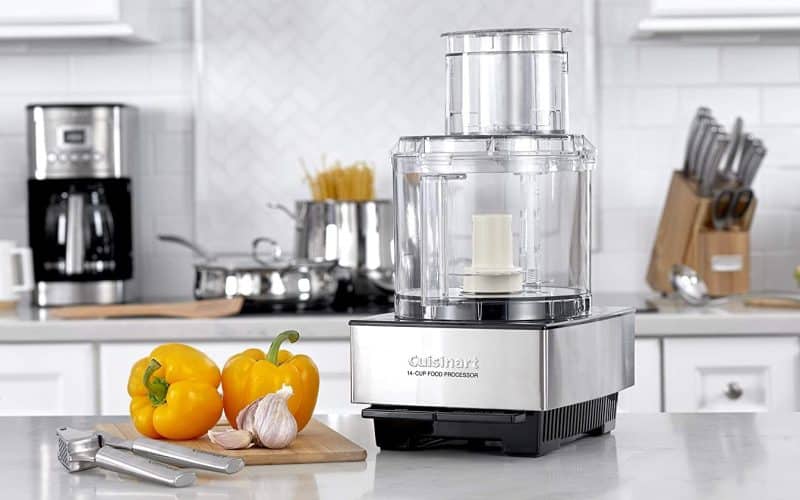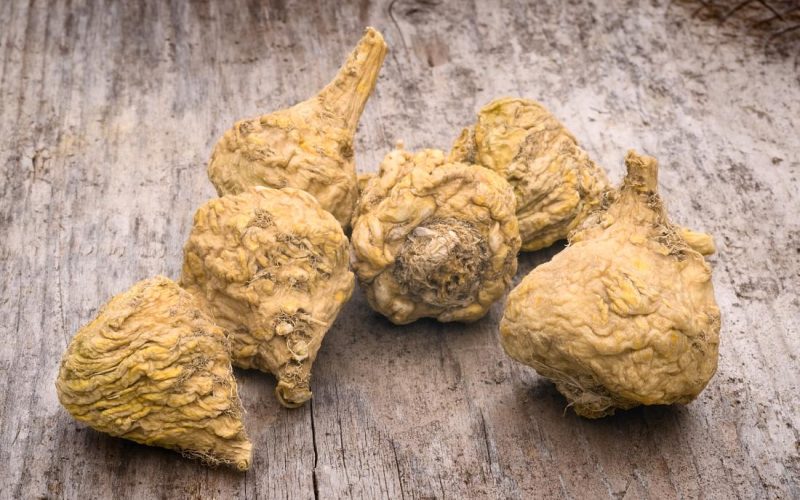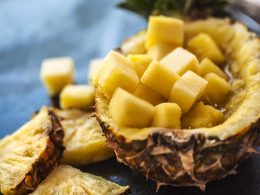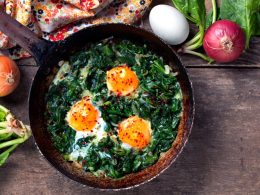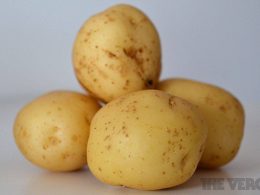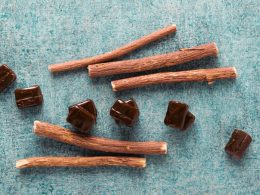A food processor is your mixing, slicing, dicing, and chopping machine. With the food processor doing all the prep work, you will prepare your meals faster and be in and out of the kitchen in a shorter period.
In 1973, the food processor was introduced to the North American market by engineer Carl Sontheimer, who had spent a year modifying a French industrial blender for the home cook.
It took some years for consumers to see the benefits of the new appliance, but once they did, the food processor became very popular with chefs, cooks, and housewives.
This invention changed food preparation in home kitchens around the world. Although one of the first electric food processors was the Starmix, introduced in 1946 by a German company Electrostar
A food processor is a kitchen appliance that can be used for various kitchen activities like chopping, slicing, shredding, grinding, and pureeing most types of food.
Some food processor models can also assist in making citrus and vegetable juice, beating the batter, kneading dough, beating egg whites, and grinding meats and vegetables.
The Basic Components
Modern types of food processors come in three basic sizes: full, compact, and mini. However, no matter what size they are, the basic components are always the same: a bowl with a lid and a feed tube, a motor, and a set of attachments.
The motor is housed in the appliance base; this is the heaviest part of the device. Full-size machines usually have larger, more powerful motors, and can weigh more than 20 lbs. (9 kg).
This weight has a practical value: The base’s heaviness gives it stability and deters it from moving around while the motor is working.
Although the first food processor bases were made only from white hard plastic, in recent times, they are made in a variety of stylish colors and with plastic and metal finishes, which ensures the appliance fits in with the kitchen decor.
From the motor, a shaft connects to power the attachments. The bowl can be made of durable, transparent plastic, and fits onto the shaft and clicks into position. The lid is usually made from the same material, and it closes tightly into the top of the bowl.
In older models, looking the bowl into the shaft turns on the motor, but newer models typically have a switch or button to turn it on/off.
The lid has a feed tube fitted with a plunger. You can insert food into the device through this feed tube, pushing it down with the plunger. Some models have wider and narrower feed tubes for use with larger and smaller food items.
The size of the bowl varies according to the size of the machine:
Types of Bowls
Full Size
With at least a 9-cup capacity, this smart assistant is ready to take on various tasks.
- Precision settings and smart accessories, like a dough hook, make it possible for you to give the more manual and labor-intensive tasks over to your food processor.
- Large bowl sizes let you prep family-sized helpings all in one place. You’ll be amazed by what your food processor can make from appetizers to soups to juices and more.
- Whether you’re grating, julienning, or shredding, these accessory discs let you expertly prepare and present everything from veggies to cheese.
- Wattage gives an idea of how powerful a processor is, but other features, like blade construction and speed settings, will also contribute.
- Larger feed tubes mean you can add larger ingredients straight into the food processor.
Mini Choppers
The perfect fit for tight squeezes, this compact tool usually has a 3- to 5-cup capacity and a great go-to for every prep step.
- This streamlined design quickly dishes out smaller servings, like appetizer dips and sides.
- Quick to get out, set up, and use, the mini chopper is perfect for everyday kitchen tasks.
- From chopping nuts and herbs to mincing garlic to slicing veggies, the mini chopper’s smaller capacity, and size mean your kitchen tasks will be more specialized
Dual Food Processor & Blender
A 2-in-1 design brings effortless convenience to your countertop and cuts down on counter clutter with two tools in one.
- With interchangeable carafes for blending and processing, this smart essential packs power and precision for everything from pureeing to crushing ice to shredding to slicing.
- With the attachments, accessories, and discs of both a blender and food processor, this gadget will wow you how much it gets done.
In most food processors, the attachments fit over the shaft within the base. Common food processor attachments are the S-shaped blade called Sabatier blade — and the shredding and cutting disks.
The Sabatier blade lies at the bottom of the bowl. It comprises two thin and curved blades mounted opposite sides of a central plastic column that fits into the bowl’s shaft.
The blades of the Sabatier are generally made of metal, but often they are made of hard plastic. You will find that metal blades are better because they are more durable and sharper.
The shredding and cutting disks are made of metal and rest at the top of the bowl, above the shaft. You force the food down the feed tube, and it comes in contact with the plate, at which point it is rinsed or cut into the cup.
Holes on the shredding and cutting disks can produce fine, medium, or coarse bites of food. You can buy these various models of the disks separately if they are not included with your food processor.
In addition to the regular accessories that come with the food processor, one can add some extra attachments and make the appliance more multi-purposed by purchasing additional appliances.
Other common attachments include:
- A dough blade – This blade is usually made from plastic or metal and has straighter (less curved) paddles than the s-shaped blade. One can use this to make dough for pizza and pizza.
- An egg whip – This has two straight arms with large open paddles at the ends. One can use this to beat egg whites and whip cream, and also utilizing sufficient air to ensure a fluffy, well-beaten end product.
- A julienne disc – This piece has a row of short, sharp protruding teeth. One can use this to cut food into long, thin bits.
- A French fry disc – This is identical to the julienne disc but yields larger fatter pieces.
- A citrus juicer is a dome-shaped attachment that can be used to squeeze the juice from fruits like oranges, lemons, limes, grapefruits, etc.
- A non-citrus juicer – This can be used to puree fruits and vegetables placed into the feed tube and collect the pulp in the middle while straining the juice into the bowl’s bottom.
You can also find a particular container to store all of the attachments in and extra work bowls, which can be useful if one is making different things in the food processor and don’t want to wash out the bowl between tasks.
As mentioned earlier, some models have feed tubes and bowls of different sizes that can be used with the same base. These can help you perform a variety of tasks with one appliance.
Things to consider while choosing a food processor
A go-to for every part of prep—from blending to grating to shredding to chopping—the best food processors take on tasks that often demand a lot of your time and energy. Before you buy, consider:
What are you making?
Think about meal sizes and the type of tasks you are performing. The more powerful a processor, the quicker it will work, and the more precise the results will be.
Necessary cutting or chopping doesn’t need too much power. Nonetheless, specific tasks, like dough mixing, will demand more force.
Remember, if you are dealing with many liquid ingredients, you will need a processor with a larger capacity.
Depending on the intended use, you should choose the Wattage carefully. To be on a safe side, Food Processor motors with more than 700 Watts should be able to accomplish even those more challenging jobs.
What are your favorite foods?
If your diet consists of lots of large fruits and veggies, you’ll need an extra-wide feed tube—this way, you don’t have to waste time cutting ingredients.
Selecting the right size Food Processor
This will depend on the size of your Family. For a family of four, I would go with any size around 10 cups. At the same time, larger appliances will be required for commercial food preparation.
Attachments
Check out if the food processor comes with any blades or attachments. Extra tools and accessories can help your food processor do even more, like knead the dough and grind meat.
The food processor you chose should have several different types of blades and attachments for different functions like pureeing, chopping, grinding and so on.
You should also be on the lookout for the quality of the material it is made from. The best blades are made of stainless steel. They offer the highest durability and performance.
The amount of kitchen space available
Consider your countertop and cupboard space before you add another addition. Look for a locking bowl and locking lid so that you can mix and make with peace of mind.
What speeds and settings does it have?
The more options you have, the more precise and consistent your results will be. Check for a pulse setting, which will come in handy for bursts of power and hands-on products.
Is the food processor dishwasher safe?
Remember, you’ll always have to clean up, so choose a model that makes it easy to tidy up.



